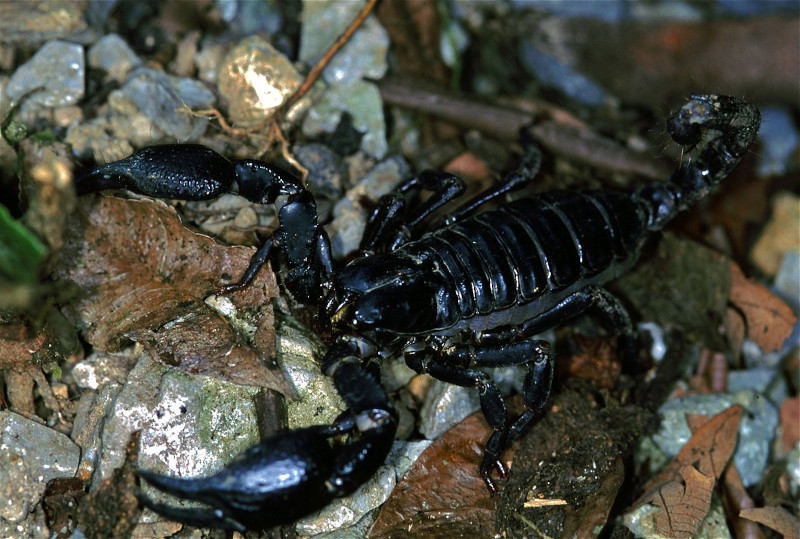Asian Forest Scorpion Facts
- The Asian Forest Scorpion is a remarkable variety of arachnid. Imagine finding this creature in one of your shoes as you camp in the wilderness.
- Most notably, it easily ranks as one of the largest scorpions on earth. However, despite its size, its venom generally poses no threat to humans.
- Yet rather sadly, it is commonly sold in the exotic pet industry. This occurs due to the combination of impressive size and low toxicity.
- Meanwhile, the IUCN has no listing for this creature. It has a large habitat range, and has also, for the moment, maintained its numbers.
Related Articles
Asian Forest Scorpion Physical Description
Firstly, the amazing Asian Forest Scorpion is a physically impressive species. Body length often reaches a total of roughly 4.7 in (12 cm).
Yet sexual dimorphism is present. Consequently, while the length may be roughly identical between genders, males have larger claws.
Its body most commonly displays a shiny black color. However, greenish-black shades, or even bluish, often almost glossy, sometimes appear.
This invertebrate is also heavily built, including the especially powerful pincers. Certainly, it uses these in defense more than the tail.
- Kingdom: Animalia
- Phylum: Arthropoda
- Class: Chelicerata
- Order: Scorpiones
- Family: Scorpionidae
- Genus: Heterometrus
- Species: H. spinifer
Asian Forest Scorpion Distribution, Habitat, and Ecology
Above all, the magnificent Asian Forest Scorpion is distributed widely across tropical and subtropical southeastern Asia.
Most notably, this region includes the countries of Laos, Cambodia, Thailand, Vietnam, India, Nepal, Sri Lanka, and China.
Like most species of scorpion, the animal is also principally nocturnal. Further, individuals prefer to hide under logs or leaves or in burrows during the day.
Meanwhile, just as all arachnids, it evolved as a carnivore. Finally, its prey usually consists of a wide variety of insects native to its particular region.
Species Sharing Its Range
Check out our other articles on Yellow-Eyed Penguin, 10 Remarkable Rare Cetaceans, Bleeding Heart, Mary River Turtle, Mitchell’s Satyr Butterfly, 5 Sensational Salamanders, Glitter Squid, Mahé

